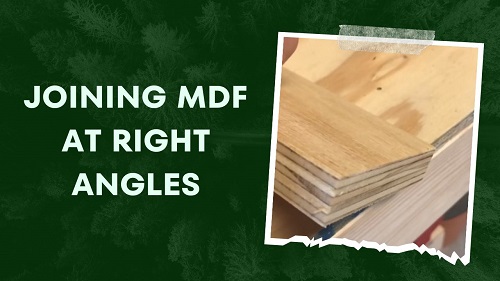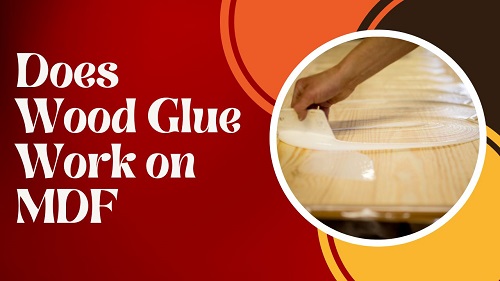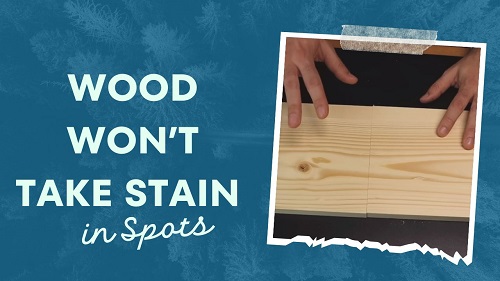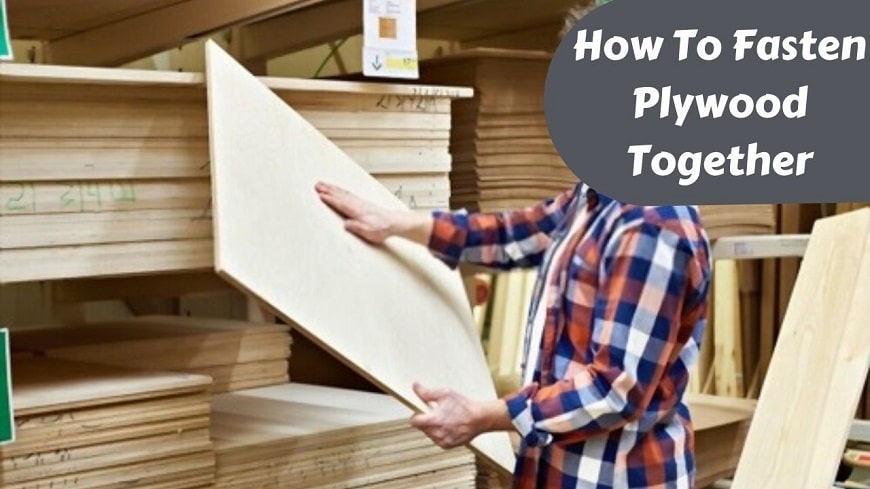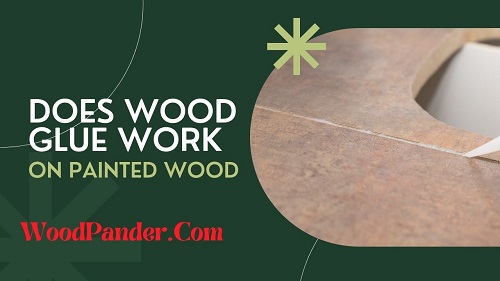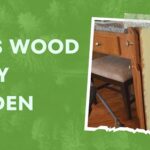You must be thinking of renovating your furniture or cabinet hence, you are wondering how to dissolve wood glue to separate the boards that were joint before. Also, accidental spills of wood glue can take place that you need to remove.
Undoubtedly, wood glue is the best solution for joining wood boards to make furniture and other things. However, the problem is when it is necessary to dissolve glue as it becomes a challenge without ruining the surrounding woodwork. Thus, it is a tough process especially when the glue stains. However, you can use a heat gun to soften or break down the glue. Also, you can go for denature alcohol.
Nonetheless, there are some other very quick and easy methods available. Let us demonstrate them to you.
| Wood Glue Type | Dissolving Method |
|---|---|
| PVA Wood Glue | Warm Water and Vinegar |
| Acetone | |
| Isopropyl Alcohol | |
| Denatured Alcohol | |
| Polyurethane Glue | Acetone |
| Mineral Spirits | |
| Denatured Alcohol | |
| Hide Glue | Warm Water |
| Steam | |
| Vinegar | |
| Ammonia | |
| Hydrogen Peroxide | |
| Epoxy Glue | Acetone |
| Heat | |
| Isopropyl Alcohol | |
| Denatured Alcohol | |
| Cyanoacrylate Glue | Acetone |
| Nail Polish Remover | |
| Warm Soapy Water |
One of our articles –Does Wood Glue Work on MDF?
What Dissolve Glue from Wood?
Some chemical solutions are available out there that help in dissolving wood glue. However, there are different types of wood glue available. Thus, the solution you are going to pick has to be selective and effective. So, let us share with you a list of wood-dissolving solutions.
- Adhesive Remover
Adhesive removers work best to dissolve glue as they are specially chemicalized for the purpose. Applying adhesive remover on the waxed wood will soften the glue. Eventually, after a slight rubbing, the glue will come off.
- Vinegar
Vinegar is a popular option for cleaning objects or dissolving substances. If the wood glue is stained or painted, you can certainly use a cloth dampened with vinegar and rub over the surface. For your information, white vinegar works best on the wood glues of class D3 and D4.
- WD 40
It is a commercial product used for dissolving strong glue such as super glue. Spraying just a little amount will be enough to soften the wood glue as well.
- Acetone or Denatured Alcohol
Acetone or Denatured alcohol is another popular option for dissolving glue from wood joints. The process is also simple. Just inject the alcohol through the joints and wait for some minutes. After around five minutes the glue should be softened. Then use a knife to wiggle between the joint. Gradually, it will separate the wood boards.
- Rubbing Alcohol
Rubbing alcohol works best on rough wood. So, if you want to remove glue or its stain from a block of rough wood, just dampen a cloth in the alcohol and rub over it. When it dissolves the glue, wipe it down. Then use fine sandpaper to sand off the stain slightly.
- Methylated Spirits
Spirits are also a great dissolving solution. However, methylated spirits work better on some exotic woods for example teak. Just pour some spirit on a sponge and rub its rough side over the glue. Gradually, you will observe the result.
- Baby Oil
It works as a mild solution to dissolve less strong glues like vegetable glue. You can apply it by following the usual method.
One of our articles –Wood Glue Vs Super Glue .
Ways To Dissolve Wood Glue
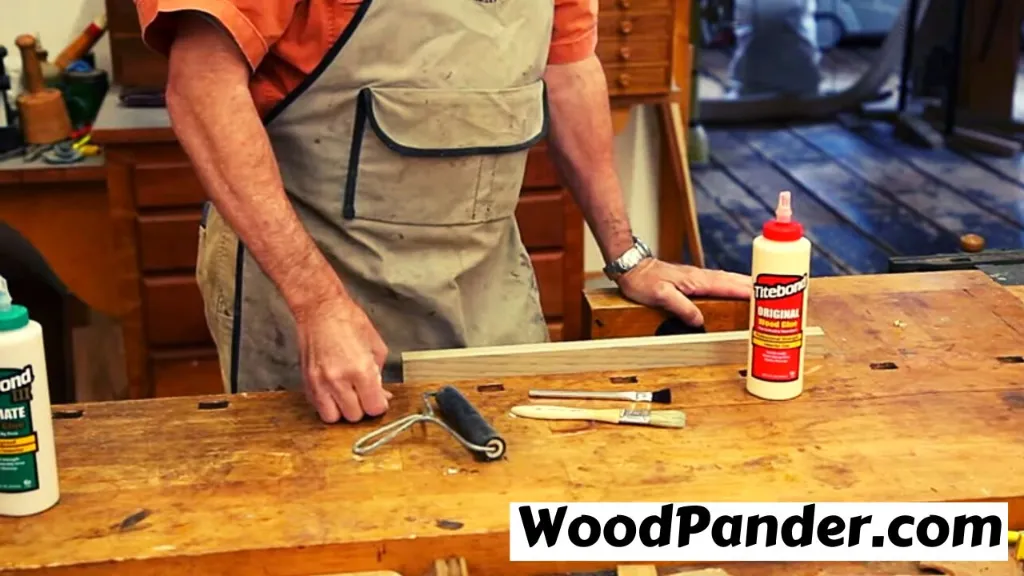
We have already mentioned that there is a wider range of wood glue types available. For example, carpentry PVA glue or gorilla wood glue, polyurethane glue, cyanoacrylate glue, vegetable glue, hide glue, and others. However, some glue requires strong and highly effective solutions to dissolve whereas others require some mild agent like baby oil.
However, there are several ways to dissolve wood glue. Let us discuss the ways.
Mechanical Way
The mechanical method does not require a solution to get rid of the glue and separate the joints. Hence, it is not any dissolving process. Thus, you can pursue this way by simply using a chisel. Just slide the chisel inside the joints and let it cut the glue bubble. Then remove the dried wood glue.
Since chisels come with a sharp edge, run the edge over the glue. Then use 80 or 120-grit sandpaper to sand out the remaining glue.
So, the way is easy but it also has some drawbacks as you cannot go for a deeper cut with a chisel. Hence, the tool can handle glue that is superficially attached.
Moreover, using a chisel may hurt the wood board as well if you are not careful enough. Therefore, it is better if you go for the other two ways we are about to mention below.
Thermal Way
Coming to a way more suitable method for dissolving wood glue, is basically a heating process. Generally, a heat gun is used to produce heat. Wood glue can withstand normal temperature or room temperature. But they are bound to melt at higher temperatures.
However, to obtain this method you can use,
- Heat gun
- Warm water
- Hair dryer
To know the steps read out the instructions below.
Step – 1: Heat the Area Around the Joint
This is the very first step. For this, you can either use a heat gun or a hair dryer. For example, you want to separate the boards of a cabinet or wood table. So, if you want to apply the thermal method then first heat the joint area with a heat gun or hairdryer.
However, you need to maintain a proper distance while heating the area. Make sure you are holding the machines at least 6 inches away from the surface. Otherwise, it may burn the woodwork or ruin the painted wood. Also, you have to keep moving the gun making sure the heat is distributed well.
Step – 2: Inspect the Glue
After a few minutes of applying heat, it is time to inspect the glue. It should be softened by then. However, the glue will not melt for sure but you will find the soft glue between the joint.
Step – 3: Wiggle a Flat Tool
Now that you know the glue is soft, get a flat tool of metal and work it into the joint of the table. You can simply get a knife as it has a sharp edge. Penetrate the knife and start wiggling. You may also have to run the heat gun over the area simultaneously so that cutting the glue becomes easier.
Step – 4: Clean Off the Glue
When you are done cutting the built-up glue, make sure to clean it off as well. You can use a damp cloth to simply wipe away the substance. Also, you need to clean the knife as it will hold up some glue on its surface.
Step – 5: Pull Apart the Joint
Finally, it is time to show some strength. When you remove the dried glue, pull apart the board joint. Do not put too much pressure while making them apart. Otherwise, you may end up splitting the boards instead.
Chemical Way
Coming to the most effective way of dissolving or loosening wood glue. We have already mentioned the name of some household solutions that you can use for such purposes. However, you can use mass-produced commercial solutions as well like WD-40.
This is surely a reliable way but professionals suggest experiencing the method on invisible or small part first to be aware of the results. So, let’s know how you can start with the chemical process if you want to remove wood glue from painted wood.
Step – 1: Surface Preparation
To begin with the process, you need to prepare the surface. It is better to place the object over a thick layer of old newspaper also keeping a plastic underneath. This will make sure you are not messing up the space.
Also, make sure that you are performing the process in a well-ventilated place.
Step – 2: Soak A Towel in Vinegar
Now, saturate a towel in a bowl of vinegar and drain out excess moisture. But make sure you do not squeeze too hard as it should be dripping some vinegar. Make the towel drips vinegar directly into the wood glue. Keep pressing the towel and wrap it over the joint area.
After around 15 minutes, the glue should be soft enough to remove from the wood.
Step – 3: Reapply Step 2
Since vinegar is a mild agent, loosening the glue may require a second attempt. So, to loosen more glue, obtain step 2 again. So, set the soaked towel over the area again for another 15 minutes and wait for the result.
Step – 4: Remove the Glue and Separate the Joint
When the vinegar softens the glue, you can remove them by using a steel tool. Then pull apart the joints. After that clean off the extra semi-liquid glue.
Step – 5: Clean the Wood Pieces and Dry Them
Then clean off the surface of the wood pieces with a rag. First, dampen the rag in warm water and then clean the surface. After that, let the wood pieces dry.
How to Dissolve Wood Glue from Wood Wall
To dissolve the wood glue from the wood wall you apply both the thermal process and chemical process together.
First, heat up the area with a hairdryer or heat gun and wait for the glue to melt or soften. Then pry a tool and pull apart the boards. However, you can adopt the same method for dissolving glue from the wood floor as well. You can also go for warm water treatment.
If the heating process does not work then try applying acetone or a nail polish remover. Apply them in the same way we have just mentioned above.
One of our articles – Does Hot Glue Work On Wood?
Related Questions
Q: How do I know which type of wood glue I have?
A: Check the product label or packaging for information on the type of glue used. Common types include PVA wood glue, polyurethane glue, hide glue, epoxy glue, and cyanoacrylate glue.
Q: Can I use any type of solvent to dissolve wood glue?
A: No, different types of wood glue require specific solvents. Using the wrong solvent may not effectively dissolve the glue or could damage the wood surface.
Q: Is it necessary to dissolve wood glue before removing it?
A: It depends on the situation. Some wood glues can be mechanically removed without dissolving, while others may require dissolution to avoid damaging the wood.
Q: Can I use heat to dissolve wood glue?
A: Heat can be effective for certain types of glue, such as epoxy glue. However, it’s important to exercise caution and avoid excessive heat that may damage the wood or surrounding materials.
Q: Are there any natural methods to dissolve wood glue?
A: Yes, for some types of glue, warm water, vinegar, or steam can be used to dissolve the adhesive. However, natural methods may not be as effective as solvents specifically designed for wood glue removal.
Q: How long does it take for the glue to dissolve?
A: The time required for the glue to dissolve can vary depending on the type of glue, the solvent used, and the adhesive’s thickness. It’s best to follow the instructions provided with the solvent or test a small area first.
Q: Will dissolving wood glue damage the wood surface?
A: Dissolving wood glue using the appropriate solvent and following the instructions carefully should not damage the wood surface. However, it’s important to test the solvent on a small, inconspicuous area before proceeding.
Q: Can I use sanding or scraping instead of dissolving the glue?
A: Sanding or scraping may be effective for removing dried or excess wood glue. However, for stronger bonds or when dealing with delicate surfaces, dissolving the glue may be a better option.
Q: Are there any safety precautions I should take when using solvents to dissolve wood glue?
A: Yes, always follow the safety instructions provided with the solvent. This may include wearing protective gloves, working in a well-ventilated area, and avoiding contact with eyes or skin.
Q: If I can’t remove the wood glue, should I seek professional help?
A: If you’re unable to remove the wood glue safely or effectively, it’s advisable to seek assistance from a professional who has experience in woodworking or adhesive removal. They can provide guidance and avoid potential damage to the wood surface.

